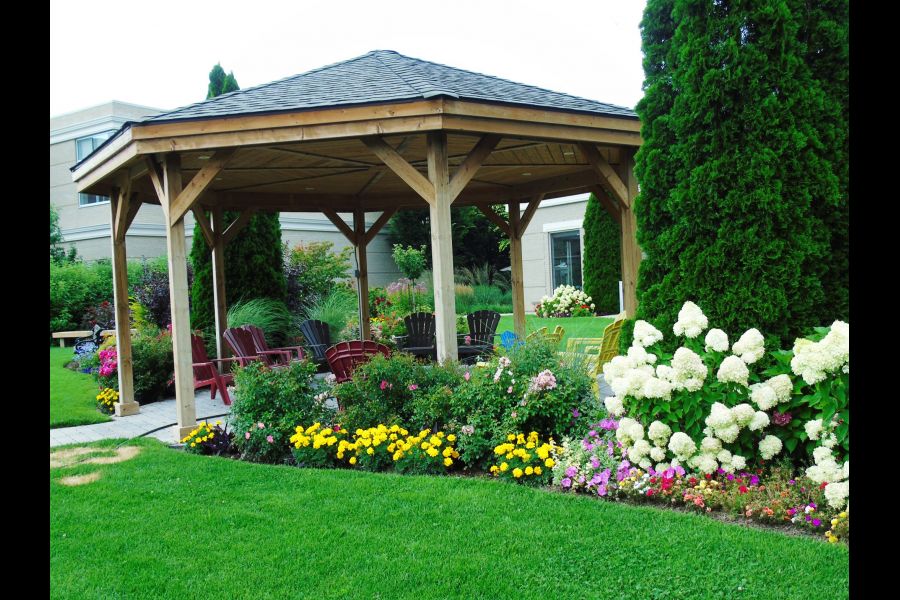Over my years of designing, I often come across a familiar scenario. I notice the clients have done nothing with their backyard yet, even after living there for several years or longer.
When I ask what they use their backyards for, they say they really do not use them at all. The reason? They just feel too exposed – to the sun and other elements, and too exposed to the neighbours.
It doesn’t matter if you have a large country estate or a small postage stamp-sized garden, we all have the need to feel enclosed.
I think it is the same feeling we get when we wrap ourselves in a blanket – a feeling of instant comfort and knowing that everything is right in the world.
Until you create that sense of enclosure into your garden, you will find that your garden does not feel complete. For it to feel like your own little sanctuary you need to achieve that sense of enclosure.
There are several ways to go about accomplishing this.
DEFINING THE PERIMETER
To feel at home and at peace in the garden, you need something that defines the garden space. When sitting out in the middle of your backyard leaves you feeling totally exposed to neighbouring houses, you are unlikely to spend time there enjoying your garden.
This enclosure can be made from plants, fences, walls, screens, trellises with vines, even berms. They each have their own characteristics, but the key thing they all do is separate the space inside the enclosure from the space outside of it.
The most common way we enclose our properties is with a fence. Always check with your local municipality to see what the bylaws are for your area.
In many municipalities, there is about a six-foot limit to structures such as fences. (NOTL's 2014 fence bylaw allows side and backyard fences up to two metres high.)
Wooden fences provide a more solid barrier to close off your garden area and give you an instant result. Consider the style of garden that you are wanting to create before deciding on what type of fence you build.
Another way of enclosing the perimeter of your garden is using plants. Fences and walls create an instant barrier while enclosures made of plants will take some time to grow and fill out.
There is a rule of thumb to follow when looking at defining the perimeter of your garden and it is known as the “law of significant enclosure.”
This means that we feel enclosed when the vertical edge of a space is at least one-third the length of the horizontal space we’re inhabiting – i.e., if your property is 60 feet wide, you will feel enclosed when your perimeter plantings are a minimum of 20 feet high.
The plantings can be a more formal type of hedge (such as cedars) or more natural groupings of mixed plant material. By defining the perimeter of your garden, you have set the bones of your garden in place.
CREATING A CANOPY
Another way of creating that sense of enclosure is with a canopy layer, enclosing the overhead space. The most common way of doing this is with a tree canopy.
Sitting under the canopy of a tree will give you a peaceful feeling. I love just looking up through the branches and catching glimpses of a blue sky. No matter what size your garden area is you can find an appropriately sized tree for your garden.
Another way of creating a canopy layer is using structures. Pergolas, gazebos and awnings have become more popular in the garden. Not only do they help cut down on the amount of sunlight, but they also provide that enclosure you need.
UNWANTED VIEWS
To help create that feeling of enclosure, you also need to disguise any unwanted views. This includeS items such as an ugly neighbouring shed, utility boxes and poles, and poor storage practices. By blocking these unsightly items, you feel less exposed and more at home in your own garden.
CREATE GARDEN ROOMS
Rooms, whether in homes or in gardens, are spaces separated by some type of wall. In the garden, this can be accomplished with hedges, trees and shrubs, vines, or fences and other structures.
They don't have to be eight feet tall, they just need to give a sense of separation, to give you a defined space to design and use. By creating garden rooms in your landscape, you are providing yourself different areas where you will feel enclosed and safe.
When you incorporate a few of these practices into your own garden, you will come closer to creating the space that you always wanted.
Joanne Young is a Niagara-on-the-Lake garden expert and coach. See her website at joanneyoung.ca.








